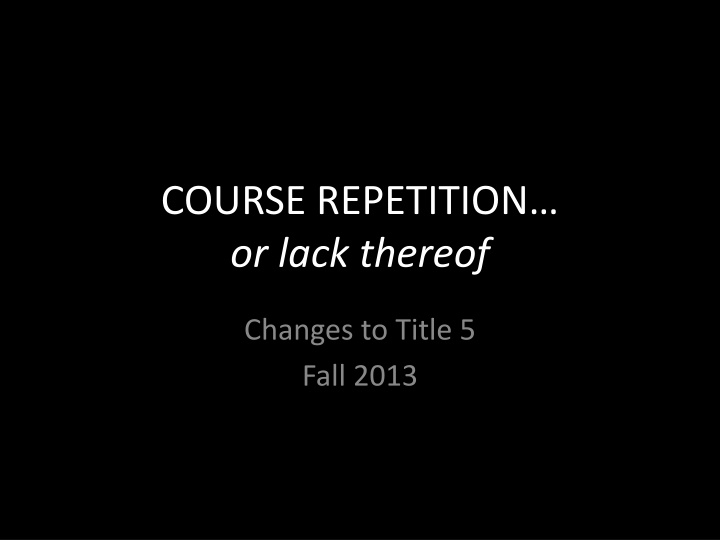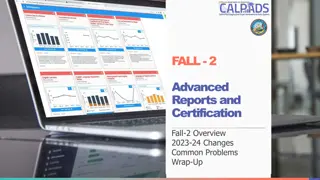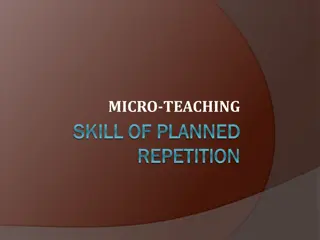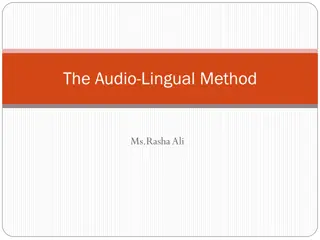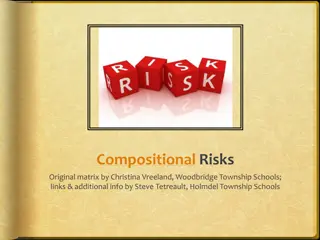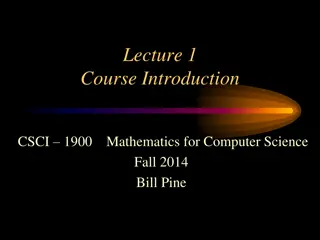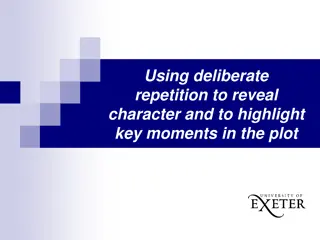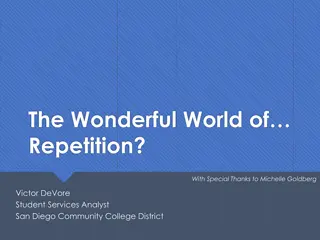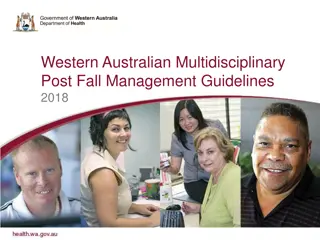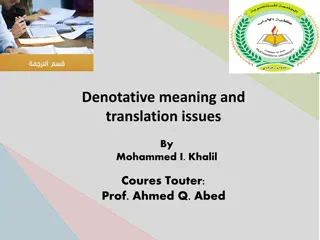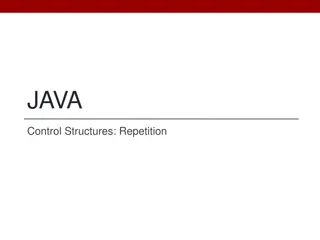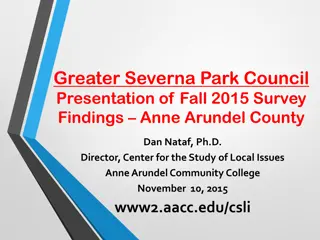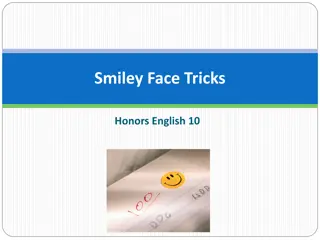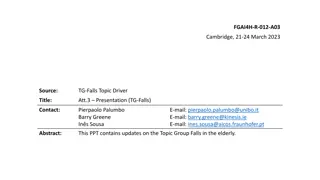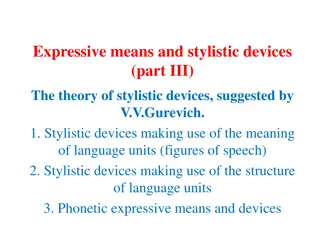Changes to Course Repetition Policy Fall 2013
The course repetition policy at SMC underwent significant changes in Fall 2013, primarily driven by cost-saving measures in California. The update eliminated repeatable courses in visual and performing arts, cosmetology, and physical education, with few exceptions. Students receiving A, B, C, or P grades face restrictions on re-enrollment unless specific exceptions apply. The policy applies retroactively to past enrollments, emphasizing inclusivity. Specific types of repeatable courses are outlined to meet major requirements or offer competitive opportunities. No clean slates or grandfathering exist in this revised policy.
Uploaded on Sep 20, 2024 | 0 Views
Download Presentation

Please find below an Image/Link to download the presentation.
The content on the website is provided AS IS for your information and personal use only. It may not be sold, licensed, or shared on other websites without obtaining consent from the author.If you encounter any issues during the download, it is possible that the publisher has removed the file from their server.
You are allowed to download the files provided on this website for personal or commercial use, subject to the condition that they are used lawfully. All files are the property of their respective owners.
The content on the website is provided AS IS for your information and personal use only. It may not be sold, licensed, or shared on other websites without obtaining consent from the author.
E N D
Presentation Transcript
COURSE REPETITION or lack thereof Changes to Title 5 Fall 2013
Why?! Ultimately this is a cost-saving measure. The state of California does not want to pay colleges to teach the same thing to the same student multiple times. And the state does not want to pay us to teach a student the same type of skill (world dance, soccer, drawing) more than four times.
Bottom line My new mantra: There is no such thing as a repeatable course at SMC with very few exceptions.
Which courses? I am talking about courses that were previously designated as repeatable such as those in the visual and performing arts, cosmetology, and kinesiology/physical education. I am NOT talking about repeats for substandard grades and W s (math, English, etc.) yet.
A student receiving an A, B, C or P cannot enroll in that course again unless an exception to the general rule applies that allows an additional enrollment(s) in that course. REPEAT
No clean slates This is applied to all students and includes all past enrollments. There is no grandfathering or clean slates. All enrollments count. F s and W s count. Military withdrawals do NOT count against the student.
Repeatable Courses Type 1. Courses for which repetition is necessary to meet the major requirement of CSU or UC for completion of a bachelor s degree Type 2. Intercollegiate Athletics Type 3. Intercollegiate academic or vocational competition
Type 1 Courses for which repetition is necessary to meet the major requirement of CSU or UC for completion of a bachelor s degree Example Music ensembles, Music 92 # COURSE REPEATS* GROUP INCLUDES: COURSE COURSE TITLE GROUP # Comments Course may be taken a total of 4 times. Evidence/Reason for allowed repeat Music majors at the CSU/UC are required to participate in an ensemble every semester. Music 64 Piano Ensemble 3 The evidence is maintained in the Office of Academic Affairs.
Type 2 Intercollegiate Athletics Anything called VAR PE can be repeated once (2 enrollments) because 175 hours are permitted per year, and a student has two years of eligibility. VAR PE 60 can be repeated because it is out of season training up to 175 hours per year. However, Kin PE can NOT be repeated.
Type 3 Intercollegiate competition Debate, dance performance, theater arts performance, Corsair # COURSE REPEATS* GROUP INCLUDES: COURSE COURSE TITLE GROUP # Comments Evidence/Reason for allowed repeat Course may be repeated four times; group (55A, 55B, 57A, 57B, 59A) may be taken a total of four times. All Dance performances are submitted to the intercollegiate competition, American College Dance Festival and, therefore, may be repeated up to four times. Dance 57B World Dance Performance 3131 performance
Substandard grades in repeatable courses A student can repeat a repeatable class to alleviate a substandard grade, but the total number of enrollments can NOT exceed the established maximum of 4. Suzy takes Music 64. She gets 1. W 2. F 3. W 4. D She s done! No more enrollments of this course at SMC.
Other exceptions Recency Significant Lapse of Time if the course is required by the district as a recency prerequisite, or another institution to which the student seeks to transfer requires the student to have taken the course more recently than the student s last enrollment. No less than 36 months. Student must petition for the exception.
Other exceptions Recency Significant Lapse of Time Example SMC Nursing program requires that students take prereqs within 5 years of admission. If Suzy took Anatomy in 2003, stopped out to care for an ailing family member, returns to apply for Nursing in 2008 she would be permitted to repeat those prereqs.
Other exceptions Extenuating Circumstances District policy may permit a student to enroll again in a course if the student s previous grade in that course was due to extenuating circumstances (illness, accident, floods, fire ). This is allowed if: The student achieved a grade in the previous enrollment , The student files a petition, The district finds the previous grade was a result of extenuating circumstances
Other exceptions special classes for students with disabilities The District may permit students to enroll again in special classes in the following circumstances: 1. Student s success in other classes is dependent upon additional repetition of this special class. 2. Student needs to enroll again to be prepared for enrollment in other classes or 3. The student s educational contract specifies a goal in which additional enrollments in the special class will help further that goal.
Other exceptions legally mandated courses District may permit a repeat if the course is required by statute or regulation as a condition of paid or volunteer employment. Example CPR. Two-fold requirement: 1. The course is required by a statute or regulation as a condition of employment AND 2. The student is employed or seeking to be employed for a paid or volunteer job for which the course is required.
Other exceptions significant change in industry or licensure standards District may permit repeat where there has been such a change in industry or licensure standards that repetition of the course is necessary for employment or licensure.
Active Participatory Courses one in which individual study or group assignments are the basic means by which learning objectives are obtained. Typically this term refers to physical education, visual arts, and performing arts.
Courses related in content Students are limited to four enrollments in courses that are related in content. Courses are related in content when they have similar primary educational activities in which skill levels or variations are separated into distinct courses with different learning outcomes for each level or variation.
Courses related in content Example Kin PE 48 series COURSE COURSE TITLE # COURSE REPEATS* 0 GROUP # GROUP INCLUDES: Comments Beginning Swimming Kin PE 48A, 48B, 48C, and 48D are all swimming classes and related in content. Therefore a student may not have more than four experiences in the group, including substandard grades and W's.' Kin PE 48A 21 swimming Elementary Swimming 0 Kin PE 48A, 48B, 48C, and 48D are all swimming classes and related in content. Therefore a student may not have more than four experiences in the group, including substandard grades and W's.' Kin PE 48B 21 swimming Intermediate Swimming 0 Kin PE 48A, 48B, 48C, and 48D are all swimming classes and related in content. Therefore a student may not have more than four experiences in the group, including substandard grades and W's.' Kin PE 48C 21 swimming Advanced Swimming 0 Kin PE 48A, 48B, 48C, and 48D are all swimming classes and related in content. Therefore a student may not have more than four experiences in the group, including substandard grades and W's.' Kin PE 48D 21 swimming
What to do? Current students may get caught in the middle of this new regulation. We can create levels of courses related in content, but they must be distinct from one another in objectives and SLO s and content. We must have a clear, logical, defensible rationale.
